 Every Heart a Doorway (Wayward Children #1) by Seanan McGuire
Every Heart a Doorway (Wayward Children #1) by Seanan McGuire Format: eARC
Source: supplied by publisher via Edelweiss
Formats available: hardcover, ebook, audiobook
Genres: Dark Fantasy, magical realism, mystery, urban fantasy
Series: Wayward Children #1
Pages: 173
Published by Tordotcom on April 5, 2016
Purchasing Info: Author's Website, Publisher's Website, Amazon, Barnes & Noble, Kobo, Bookshop.org
Goodreads
Eleanor West’s Home for Wayward Children
No Solicitations No Visitors No Quests
Children have always disappeared under the right conditions; slipping through the shadows under a bed or at the back of a wardrobe, tumbling down rabbit holes and into old wells, and emerging somewhere... else.
But magical lands have little need for used-up miracle children.
Nancy tumbled once, but now she’s back. The things she’s experienced... they change a person. The children under Miss West’s care understand all too well. And each of them is seeking a way back to their own fantasy world.
But Nancy’s arrival marks a change at the Home. There’s a darkness just around each corner, and when tragedy strikes, it’s up to Nancy and her new-found schoolmates to get to the heart of the matter.
No matter the cost.
My Review:
What happens AFTER someone comes back from Narnia? Peter and Susan and Edmund and Lucy got off really, really easy when they came back through the wardrobe. (Well, Lucy didn’t – at first) But after years of growing up in Narnia and becoming kings and queens and having all sorts of adventures, when they popped back through the wardrobe at the end of The Lion, the Witch and the Wardrobe they all seem to have gone back to being their original ages without much peering back through that looking glass.
The children who are sent to Eleanor West’s boarding school for wayward children aren’t quite like the ones who went to Narnia and returned seemingly unscathed if not completely unchanged. These children, like Eleanor herself once upon a time, found their way through a doorway, a wardrobe or a portal that was meant just for them, taking them to a place that their hearts and souls knew as home.
But their homes spit them back out again, ejected them back into our so-called “real” world, into a place where they no longer fit. And since they were children, back to parents who could not believe the stories their children told about the places that they had been and the things that they had done.
Parents who were certain that their children could be “fixed”. That with enough time and therapy – and even medications – their “real” children would return to them.
Nancy is the latest of Eleanor West’s wayward children. She spent years in the lands of the dead – and she wants to go back. Just as the other children at Miss West’s want to go back to their own worlds.
Some of them might manage it. But lightning seldom strikes the same place twice. Some of the children will have to grow up and learn to live in the world that gave them birth rather than the one their hearts call home.
Unless one of the other children kills them first.
 Escape Rating A: Seanan McGuire is an author who has been recommended to me any number of times. One of my friends absolutely adores her work. But I bounced hard off of her October Daye series years ago and just never managed to get into anything else of hers despite repeated attempts.
Escape Rating A: Seanan McGuire is an author who has been recommended to me any number of times. One of my friends absolutely adores her work. But I bounced hard off of her October Daye series years ago and just never managed to get into anything else of hers despite repeated attempts.
But the latest book in this series, Across the Green Grass Fields, popped up on another list of “must reads” for this year, and this week went to overcommitment hell in a handcart, so I needed something relatively short, and I decided to try one more time. I don’t know how many attempts this makes, but whatever it is it was finally the charm.
Every Heart a Doorway sits at a very creepy corner between urban fantasy, mystery, dark fantasy and magical realism, where snarkitude has blended with the macabre in a way that left me half expecting to find Wednesday Addams pulling the strings and telling the über-chilling campfire stories.
At the same time, it felt like an inside out version of Marie Brennan’s Driftwood, where instead of remnants of dead worlds crashing together it’s a story about lost refugees from closed worlds clinging together in all-too-frequently manic desperation.
To make the story even more compelling, on top of this marvelous creation, this place where children who have “seen the elephant” or whatever perspective-altering strange and terrible wonder applies to the world they visited, we have a murder mystery. Someone is killing the children, and it’s up to those few among them who have been, not to bright and happy worlds but rather to somber underworlds, to find the killer among them before it’s too late.
 And it’s utterly marvelous every single step of the way.
And it’s utterly marvelous every single step of the way.
I’ll be back to see who next comes to Miss West’s the next time I need a short book to take me out of whatever. Because this series is a portal to a fantastic world all by itself. I’m looking forward to seeing what’s Down Among the Sticks and Bones the next time I want to step through that door.

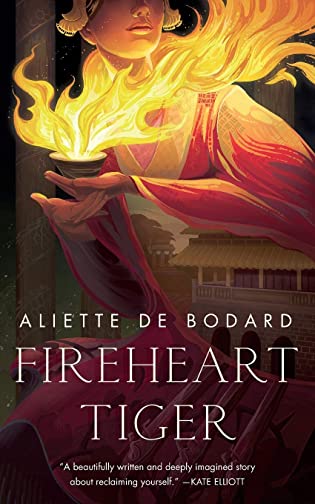 Fireheart Tiger by
Fireheart Tiger by  A History of What Comes Next (Take Them to the Stars, #1) by
A History of What Comes Next (Take Them to the Stars, #1) by  In the end, the book that I was most reminded of was
In the end, the book that I was most reminded of was  Remote Control by
Remote Control by  Escape Rating A: Remote Control is a novella, meaning that it is relatively short but complete in and of itself. So if you love SF and have not yet read any of Nnedi’s books, this is a great place to start. As is her absolutely awesome
Escape Rating A: Remote Control is a novella, meaning that it is relatively short but complete in and of itself. So if you love SF and have not yet read any of Nnedi’s books, this is a great place to start. As is her absolutely awesome 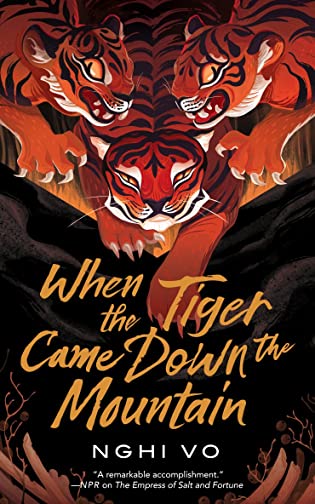 When the Tiger Came Down the Mountain (The Singing Hills Cycle, #2) by
When the Tiger Came Down the Mountain (The Singing Hills Cycle, #2) by 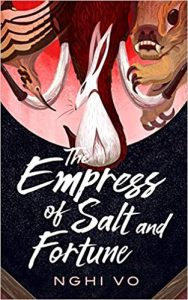 Escape Rating A: This is a story within a story. An academic is relating the story of the legendary tiger to an equally magnificent tiger – who is also telling the story to the academic. Both tale tellers have agendas. Chih wants to survive, The tiger Ho Sinh Loan wants the academic to relate the “correct” version of the tale, so that she can be assured that the majestic nature of her legendary kin is being properly presented to the humans. Sinh Loan may also want to eat the academic and their companions for dinner – and certainly will if the tale is told too incorrectly.
Escape Rating A: This is a story within a story. An academic is relating the story of the legendary tiger to an equally magnificent tiger – who is also telling the story to the academic. Both tale tellers have agendas. Chih wants to survive, The tiger Ho Sinh Loan wants the academic to relate the “correct” version of the tale, so that she can be assured that the majestic nature of her legendary kin is being properly presented to the humans. Sinh Loan may also want to eat the academic and their companions for dinner – and certainly will if the tale is told too incorrectly.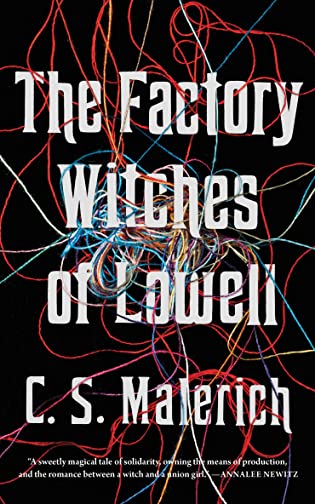 The Factory Witches of Lowell by
The Factory Witches of Lowell by 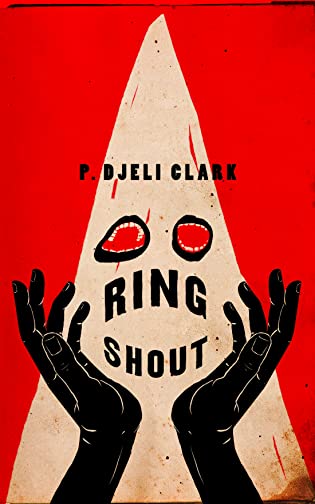 Ring Shout by
Ring Shout by 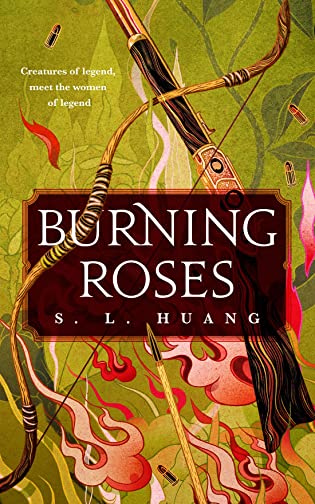 Burning Roses by
Burning Roses by 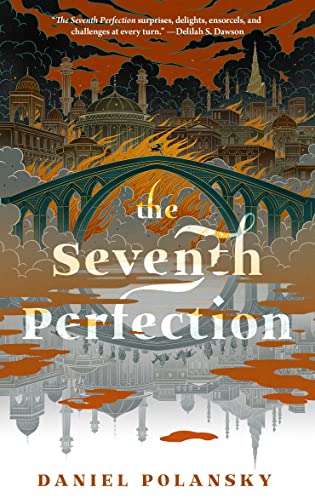 The Seventh Perfection by
The Seventh Perfection by 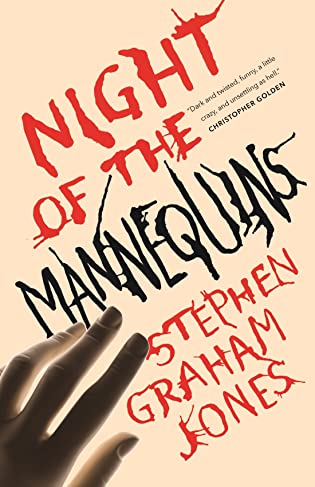 Night of the Mannequins by
Night of the Mannequins by